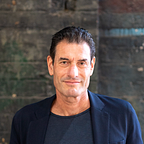A brave new art world
I wrote most of this a year ago on a plane fleeing Covid in New York for my home town of Sydney. It didn’t feel right to share my thoughts then… it does now.
Disasters accelerate trends, and the impact of Covid on our art world is no different. 10 years of change have been compressed into one. Change is an ever present condition and now that pace of change has accelerated.
The changes enforced on the art community by Covid led me to think about what’s important. How can we seize this moment to get our industry to a better place? What big ideas, (beyond simply NFT’s, OVR’s, AI & VR…) impactful and actionable changes, could accelerate progress toward delivering a better world for artists, buyers/collectors, the industry and indeed society and culture as a whole.
What would ‘a brave new art world’ look like?
Now is the time to fashion it.
I have identified four changes worth fighting for. These are not new ideas. However as any good entrepreneur (or artist) knows, execution is more important than the idea. These are ideas that are hard to execute, yet with the right will and industry collaboration, are achievable over time. I’ve been accused of being a dreamer before, yet I know these can happen, and almost certainly will happen, it’s just a matter of when and how. And executing.
In this first overview post I’ll outline a vision for A brave new art world. As I’m a fan of offering solutions not just identifying problems, I’ll follow up with specific posts on each of the four areas with further thoughts on how and when we can best achieve success.
1. Artists: a lifetime royalty program on sales for all artists.
Without an ongoing ecosystem that supports the creators, there is no sustainable creative economy, indeed without artists there is no art.
It’s not for want of ideal, this is a practical, logistical problem to solve. (The image at left is 50 years old!). A number of players are working on parts of this problem today and some countries have government programs, not without criticism, in the market. There are 3 parts to this solution: 1. data (maybe blockchain?), 2. the science of tracking the physical object (what work are we tracking?linking the data to the physical), and 3. a marketplace side. Commercially, some artists and some galleries are leading the way through requiring or offering royalties. I believe we can be there with a market driven global industry solution within 5 years.
2. Galleries: a sustainable gallery (primary market) ecosystem
The gallery ecosystem is here to stay. Unlike other industries that have been disrupted by cutting out the ‘middle man’, in the art world galleries add value as cultural tastemakers and are fundamental to a sustainable let alone thriving art market. [The art market requires the cultural tastemakers as art has no intrinsic value and most artists find it difficult to create their own market].
For galleries to have a sustainable business model they need to be incentivised for their risk — there needs to be a reward system. One clear direction lies in professional sports, where a pyramid structure is recognised and athletes go upwards through the ecosystem with a broadly agreed and globally enforced process. Tim Schneider rightly drew parallels as far back as 2018. Given willpower and execution, the ingredients are there for this to benefit all players in the art world.
3. Finance & payments: growing the art market through fin-tech
Clearly a self interested inclusion, my business Art Money is focused on growing the art market by removing the last century limitations of finance and payment friction. Using fin-tech as our tool, our purpose is to increase access to art, supporting artists and a sustainable creative economy. We believe by bringing best practice from other industries in an art world friendly way, we can grow the market, help more people buy art, and artists & sellers be supported in a financially sustainable way.
I hope we might only be a few years away from best practice finance & payments being the global standard in our industry.
4. Education (the next generation)
This is my least knowledgable area, and perhaps the most important in the long term. I feel we need to reframe the conversation about the place of art in today’s world and the contribution it can make. Art as a critical 21st century skill, an appreciation of which brings creative thinking, problem solving skills, innovation, empathy & compassion.
This is not a repudiation of art for arts sake, which is completely valid yet sadly not a persuasive argument amongst governments and arts funders.
Starting at school age, art not as a niche self-indulgent pursuit for those that way inclined, rather as a critical skillset for success in today’s fast moving, tech driven world — STEAM rather than STEM, a world where, counter-intuitively, generalists triumph over specialists.
Conclusion
I’m often asked if Art Money is an art business or a finance business. My response is ‘we are in the business of culture change’. For change to happen in any field, there needs to be leadership and execution.
Marc Andreessen, generally considered a co-founder of the internet and whose name forms half of of az16, one of the world’s most successful VCs, captures the zeitgeist.
The problem is desire. We need to want these things. The problem is inertia. We need to want these things more than we want to prevent these things… We need to want new companies to build these things, even if incumbents don’t like it… And the problem is will. We need to build these things.
Nothing could be more true in our art world. For our industry to reach its potential — commercially, sustainably and with maximum cultural impact on the world — we need to turn big ideas into action. We need to execute, to build these things.
Let’s make it happen.
